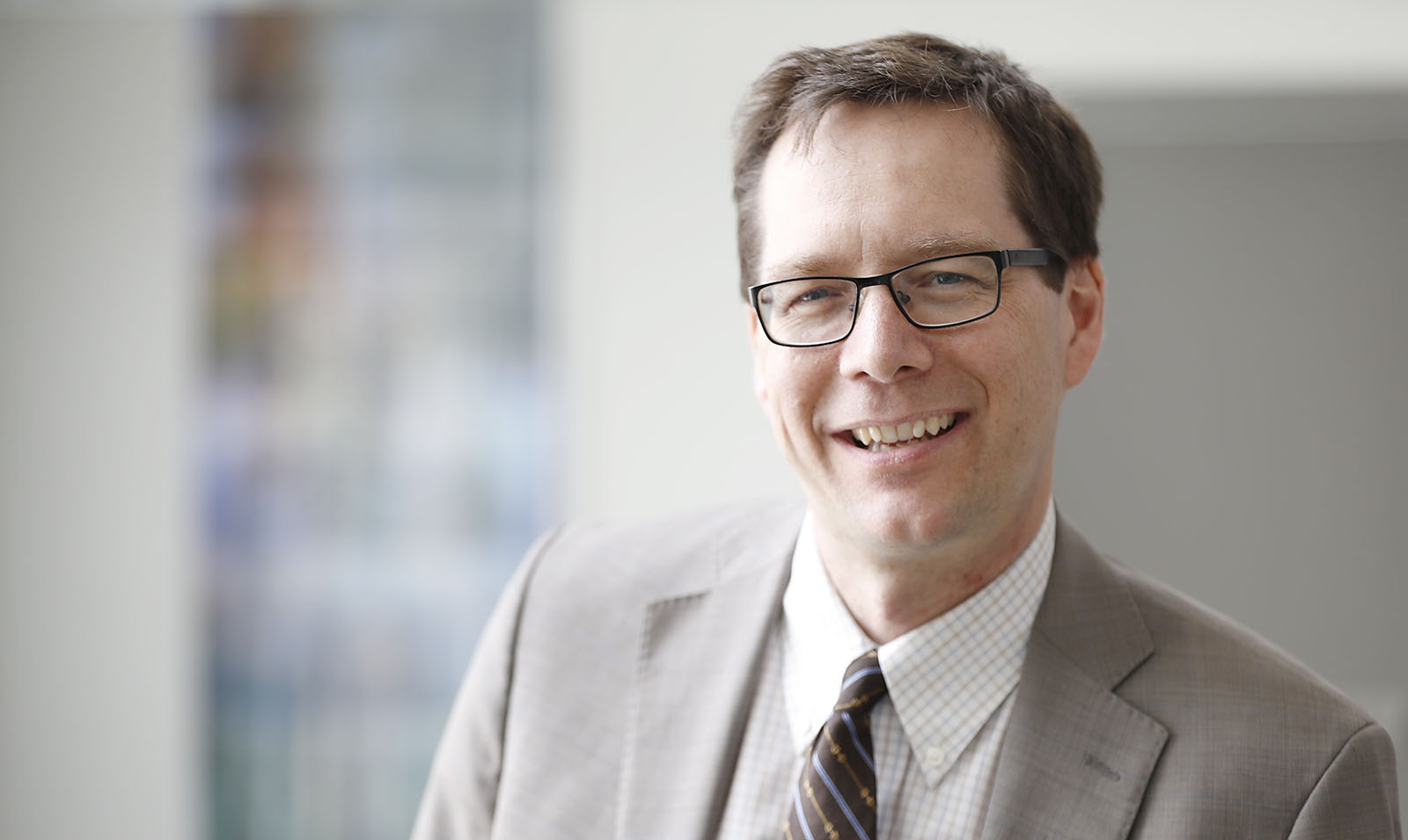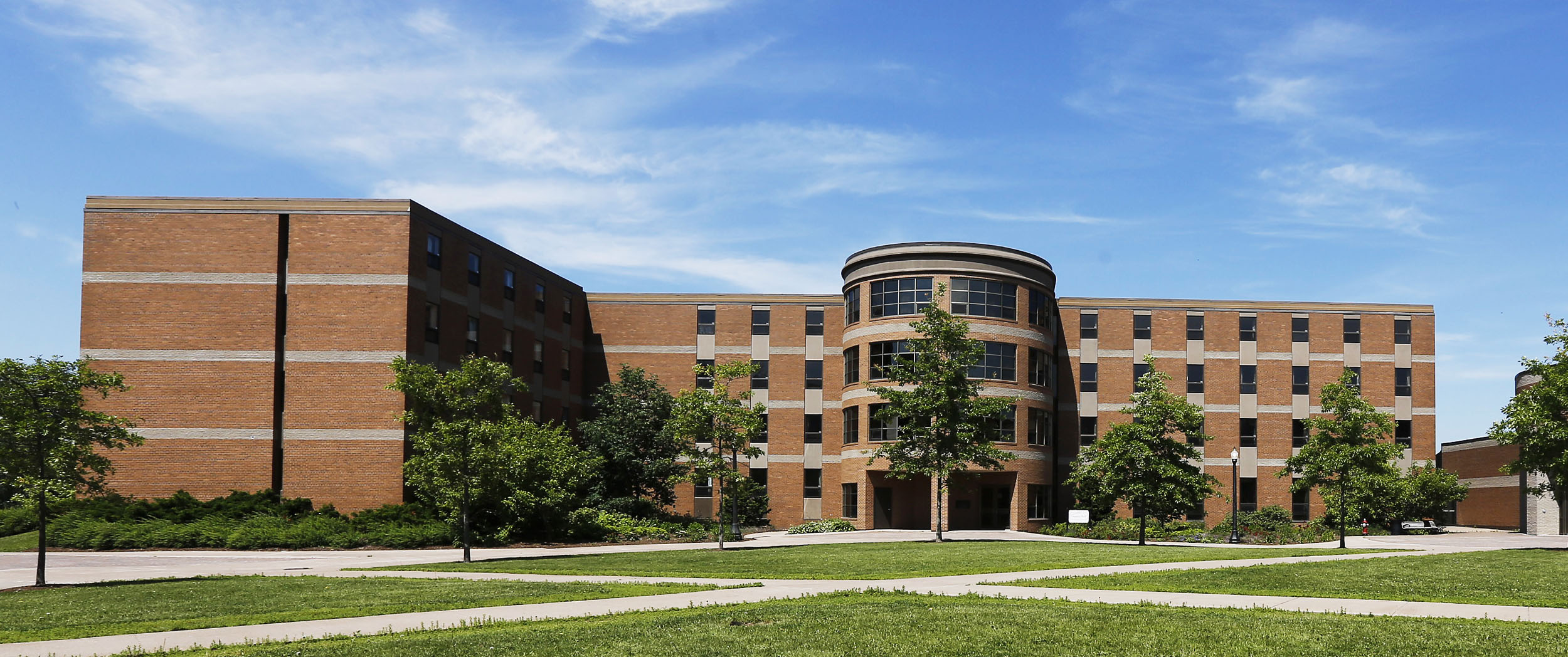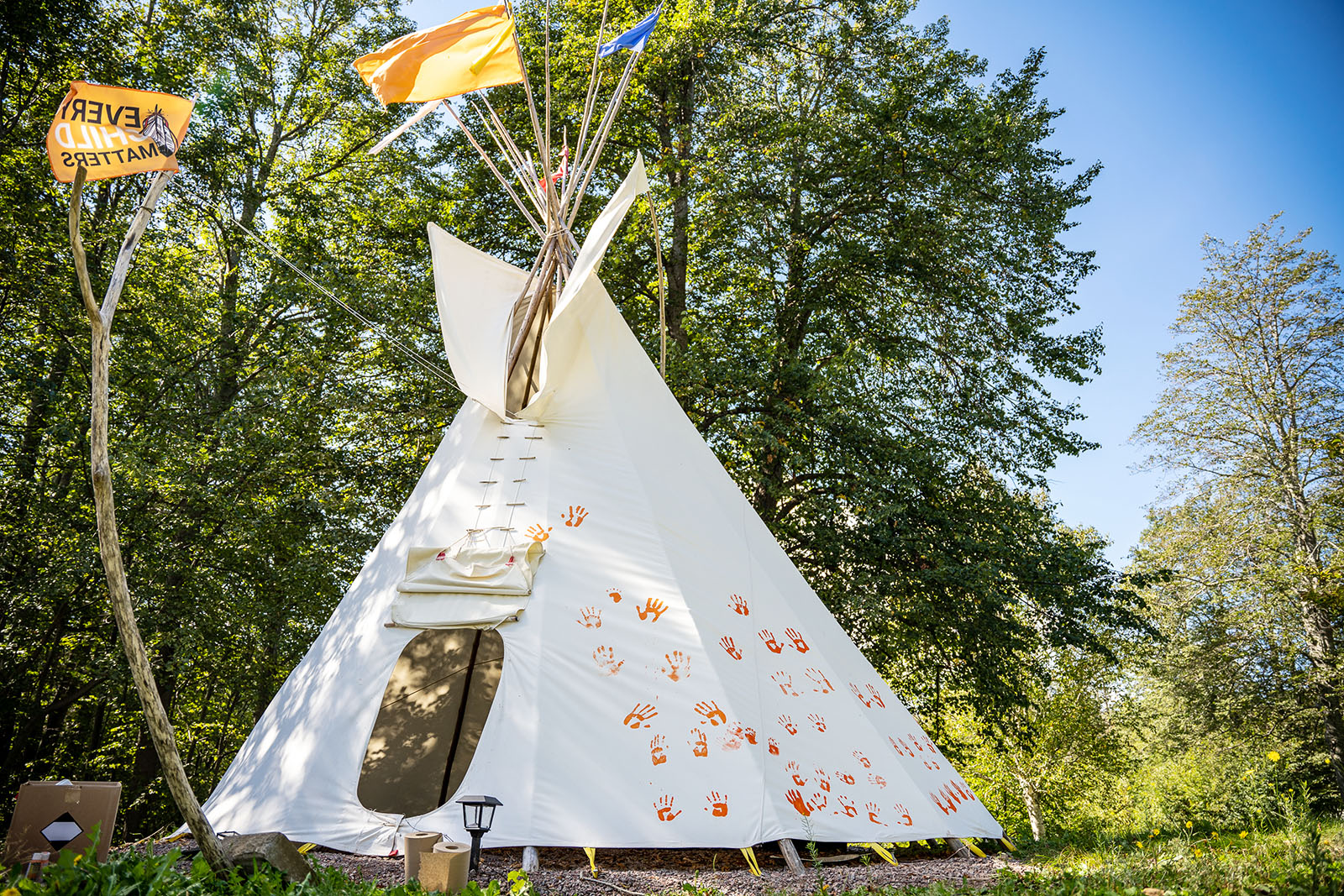Garnet and gold hard hats
As it continues to adapt to the ever-changing 21st century and prepare for a future no one can ever truly predict, Mount Allison University is wearing a hard hat these days, working on infrastructure projects with a scope that rivals the earliest days of the University’s founding in the 19th century.
From complex upgrades of major buildings to reducing the carbon footprint of campus to simpler but important gestures that make visible the University’s quest for truth and reconciliation with Indigenous Peoples, the Mount Allison University campus is in the midst of a $100-million period of renewal.
Robert Inglis (’93), vice-president of finance and administration, is marshalling much of the work. He sat down to talk recently with the Record about getting that growth right — for today’s students, and for those Mounties not yet born.

Q: There is so much construction and upgrading happening on the Mount Allison campus these days, it’s hard to know where to start. Nevertheless, let's start with the Athletic Centre. It may not be the most important project, but it seems like a place many alumni will remember well.
A: Actually, I think it is a good place to start. It means a lot to many alumni and it’s a $5.5-million project. It’s one of the large projects. We’re completely renewing the gymnasium. We’re also upgrading the ventilation in the gym and in the lower gym, in what is known as the weight room.
Q: Some of the most important upgrades are invisible, of course. The air we breathe does seem like a good investment.
A: The gym ventilation system was at the end of its life. It wasn't as effective as it could be and there was high humidity in the gym. This upgrade will also provide air conditioning and we think this will make the gym much more comfortable. We think that will also be of interest to groups who use it in the summers.

Q: Is this the first significant upgrade to the building since it was constructed in 1961?
A: Of the gym, yes, but also significant was our upgrade of the pool’s systems about 10 years ago. The pool has a new ventilation system, a new roof, and new piping and plumbing. But those are the only two big updates.
Q: A lot of the upgrades happening around campus are concerned with ventilation, with air quality. Is that part of the University’s COVID-19 response?
A: Yes, but beyond COVID, we have also done work on the efficiency of our heating system to make better use of our heating plant and reduce the amount that we spend on natural gas — while of course also reducing our carbon footprint. We have spent or will spend about $2.5 million on energy projects across campus.

Q: What can you tell the Record’s readers about changes coming to Harper Hall?
A: We plan to renovate Harper Hall starting at the end of this year. The project includes both upgrades to the interior and the exterior. We’re going to have updated student rooms, common spaces, and amenities. We’re putting in a new roof, new windows, new fixtures, new electrical, upgrading all the building’s systems. It will be ready to re-open in September 2024.
Overall it will be designed to think about the needs of our current students and students going forward. From our experience we knew renovating the building is the best approach from a perspective of cost, sustainability, and in the interest of the University.
Q: How are you accommodating the students who would normally be living there during the renovations?
A: We’re doing two things. Spaces that have not been used as student rooms, but can be, are being used. As well, we’ll be re-opening and using all spaces in our small residences: Bermuda House, Carriage House, and The Anchorage, along with Charlotte House, the newly renamed Pavillon Bousquet up on Charlotte Street, which some alumni may remember as The Monastery.
Q: Most Mount Allison alumni would say the University sort of sells itself to prospective students with its good reputation, proud history, and small-town setting. Nevertheless, as the vice-president of finance and administration, is it safe to say you don’t take attracting new students for granted?
A: No, that’s why we focus on improving amenities and meeting the needs of our students.

Q: Windsor Hall was renovated just before the COVID pandemic hit, Gairdner Hall has been renovated and given a new mission in environment and life science, Barclay has been upgraded. There are the major projects we have just spoken about and a couple big things on the horizon we will discuss later. But for all of these big, ambitious projects, it’s another structure on the Mount Allison skyline that may just be the best sign of progress. What can you tell us about the tipi?
A: We have been trying to learn and listen about our role in truth and reconciliation. Certainly the focus is on the needs of our students, particularly their learning experience, but we have also made some improvements and provided an increased physical presence on campus related to reconciliation. For example, we have a Sweat Lodge, the tipi, and a sacred firepit as well as Indigenous gardens.
Q: What role can alumni play in all of these worthwhile projects, large and small?
A: There are certainly opportunities for our alumni to support this work financially in a number of our capital projects. For example, we have opened something called the Ideas Lab, which houses experiential learning opportunities for our students. This is supported by alumni donors, with one space in the Avard-Dixon Building and one space in the Crabtree Building.
Also we’re working on planning our next big infrastructure project after the gym and Harper Hall, and that is the renewal of our library into a community hub for innovation and learning. We are looking to philanthropy for a significant portion of the funding of that project. Potentially it will be the largest capital project that the University has ever done. Those are certainly two examples where philanthropy has and can support our work.

Q: Any institution spanning three centuries always has to do ongoing maintenance, but many alumni would probably struggle to recall another time when as much facilities work was happening. Does that sound right to you?
A: The last comparable period would have been from the late 1950s through to about 1970, when many of the current buildings on campus were constructed. In my 20 years at Mount A — not just in this role, but in my time — this is probably the period when we are doing the most projects at one time.
Q: So it’s not just hazy memories and people’s imaginations?
A: (Laughing). No, it’s not just people’s imagination. We are busy and we have a lot of exciting projects going on. I would encourage alumni to visit whenever they have an opportunity and enjoy our lovely town and beautiful historic campus. There’s lots to see.


